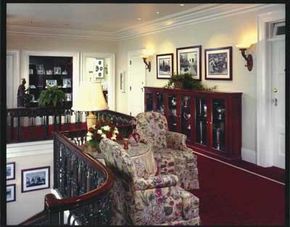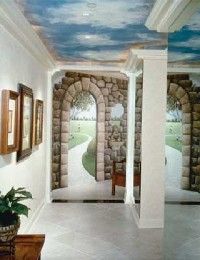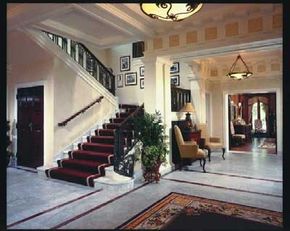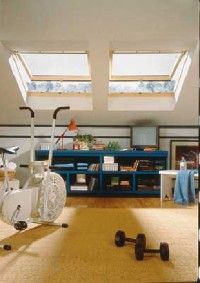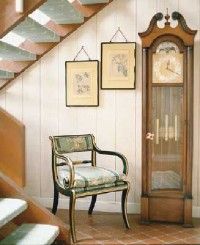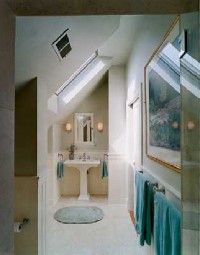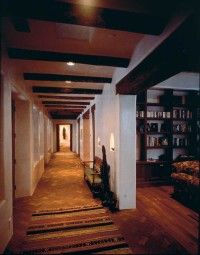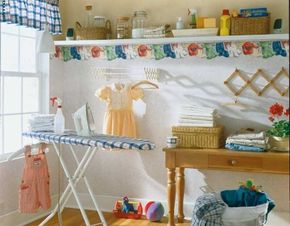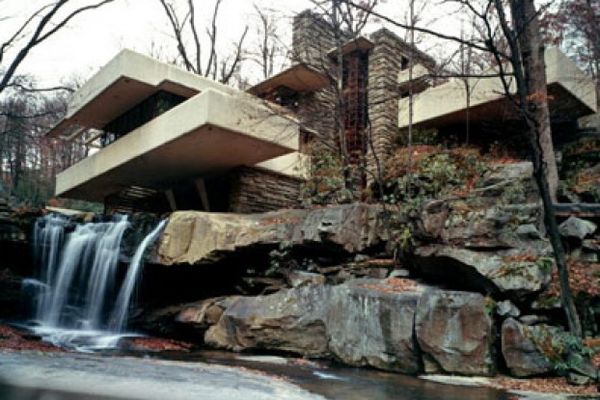A foyer is where guests pause to shed coats or park briefcases; hallways are your routes to here and there; landings are where you stop to catch your breath. Mudrooms, laundry rooms, attics -- all these unappreciated spaces have a role. With a little creativity, you can make them charming and functional.
Sometimes referred to as a vestibule or entrance hall, a foyer should be a preview of what's ahead -- in color and style. If the rest of your house is formal, for instance, a chandelier would be an inkling as to the gracious living room that follows. If you're the casual type, skip crystal and think black iron. Light neutral colors expand small foyers; uplifting colors like lemon-yellow or orange will make them cheerful; rich dark shades such as burgundy or chocolate lend an elegant tone.
Advertisement
In this article, you'll learn how to take those extra spaces in your home -- entranceways, hallways, mudrooms, and more -- and turn them into beautiful, useful areas:
- Utilizing Hallway Space Hallways can be difficult to decorate sometimes, learn how to make the most out of hallway space with these decorating tips.
- Grand Entranceway Create a space that welcomes guests and makes them feel immediately comfortable in your home with these ideas for creating a visually-enticing entranceway.
- Skylights and Eaves Without the correct treatment, skylights and eaves can look out-of-place. Learn how to utilize these architectural elements in your home.
- Entranceway Even small entranceways can have a big impact on your home. Develop this space to its utmost with these tips.
- Creating a Mudroom Stop clutter before it gets into your home by designing a mudroom tailored to the needs of your family.
- Using Attic Space Turn this often-overlooked area of your home into a usable space while increasing your home's value. Find out how.
- Creating an Exciting Hallway Even your hallway should reflect the style you've chosen for the rest of your home. Get ideas for a flowing hallway design.
- Laundry Rooms Think washing, drying, sorting, folding, and ironing laundry is merely a chore? It doesn't have to be, in the right environment. Find tips to create a laundry room that's fun and functional.
Before you begin a project, consider the following:
- Marble, tile, or slate? If it's a small entry, go ahead and splurge on the floor. For a larger area, whether the mood is dressy or relaxed, black-and-white vinyl squares have a timeless appeal.
- Paint is another alternative. How about a stenciled or trompe l'oeil design? To protect wall-to-wall carpeting, lay down a colorful kilim or rag rug.
- A roomy closet is invaluable. But an entryway bench that provides a place to sit, a lid that lifts for storing boots, and hooks for hanging coats is also a utilitarian addition. A bench painted snowy white with a tall beadboard-paneled back would fit a clean-lined country home.
- For a period look, antique Victorian hat stands, also with hooks attached and a mirror, often turn up at antique shops and auctions. Mirrors increase the sense of light and allow people to adjust their caps or hair as they enter and exit.
- Is there room for an armoire? Fitted with hooks and a shelf, armoires are catchalls for everything from jackets to golf clubs. A stand made of iron, wood, or metal or a large ceramic pot for umbrellas and walking sticks is picturesque and handy.
- The most common solution for breathing life into a hall is to treat it as a gallery. In a uniform fashion, hang prints, photographs, or botanical drawings. For cohesion, keep the framing treatments similar in style and look: black frames, say, or gold.
- If there's a jig in the hall's shape, a little shelf, mounted on the wall with brackets (slide a stool underneath), and a light will create an intimate place to pen a note or make a call without impinging on floor space.
- Wall-to-ceiling shelves filled with books (an 8-inch depth for most volumes) add a cozy library touch. And a hall or stair landing with a window and a window seat is everyone's favorite.
- If neither windows nor skylights are feasible, install adequate lighting and use color to generate a feeling of light. Pale halls, though, can sometimes look drab. Jewel tones and rich designer-like colors -- crimson, deep peach, sun-baked terra-cotta -- spell instant glamor.
- To organize the paraphernalia that collects in a mudroom, look to plastic bins in wild colors, baskets, or something unpredictable like canvas bags. Generous built-in cubbies will also keep things neat and visible. Stencil a family member's name above each slot, or have the bags monogrammed.
- A portable gardening bench stationed in the corner will afford a green-thumbed gardener a place to pot bulbs or arrange flowers. And a deep laundry sink will make washing a large pot or pet less of a chore.
- Floor and wall treatments in the mudroom need to be long-wearing. Consider alkyd paints and scrubbable wall-coverings along with materials like stone, vinyl, and linoleum. Like any other room in the house, a mudroom gains personality when you add window treatments and art.
- Laundry rooms also welcome pretty papers and bright paint. Stepping out of their drudge roles, the best ones boast cabinetry and counters for folding and stacking. Clever extras -- built-in ironing boards, fold-down sewing tables -- make these spaces multifunctional.
- If possible, plug in a window for natural light and give it a tailored shade or a pert curtain.
- With skylights or dormers to let in light and air, a lowly attic is transformed. Rather than battle with the quirky angled ceilings, use them to forge unique, personality-filled rooms.
- Station shorter furnishings to take advantage of the tight space under the eaves and move larger pieces like beds or sofas toward the room's middle.
- Attics are made for built-ins. Line the walls with bookshelves for a cozy look or light-toned cabinetry for a modern take. A wall of bookshelves or folding screens across one end visually shortens a long room. Let your imagination take wing -- up this high, anything goes.
In this article we'll show you how to spruce up the under-appreciated areas of your home, like the entranceway, hallway, mudroom, attic, and more. We'll start with the hallway first. Get decorating ideas for this often-overlooked area in the next section.
Advertisement
